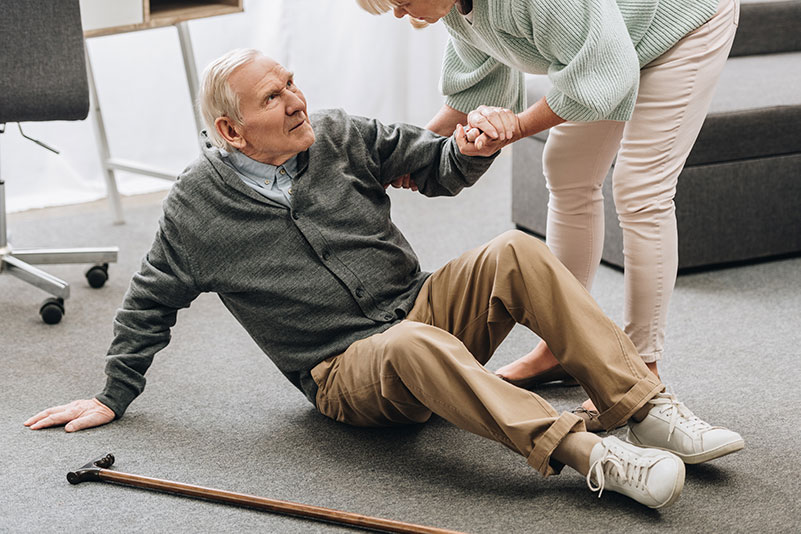As people age, their bones naturally lose strength and density, making them more prone to falls and fractures. One of the most common causes of weak bones in older adults is osteoporosis—a condition where bones become fragile and brittle due to loss of calcium and other vital minerals. Often called a silent disease, osteoporosis shows no visible symptoms until a fracture occurs. Since fractures can severely impact mobility, independence, and overall quality of life, it’s essential to create a safe home environment for the elderly.
Below are nine practical steps you can take to reduce the risk of fractures and make the home safer for your loved ones.
1. Keep the Home Free of Clutter
The first step toward fall prevention is maintaining a tidy and organized living space. Remove unnecessary items, wires, or furniture that block pathways. Hallways and staircases should always be clear to allow easy movement and reduce the chance of tripping.
2. Fix Tripping Hazards
Small home defects can become major dangers for older adults. Repair loose tiles, cracked flooring, or uneven carpets. Avoid slippery rugs or mats that can easily shift underfoot. Regularly check the floors and walkways for anything that could cause a fall, and replace or repair them promptly.
3. Add Supportive Handrails and Bars
Handrails and grab bars provide essential support in high-risk areas such as bathrooms, staircases, and near toilets. Installing these fixtures helps older adults move more safely when standing up, sitting down, or getting in and out of the shower.
4. Choose Well-Fitted Clothing
Loose or oversized clothing can increase the risk of tripping. Encourage elders to wear properly fitted clothes that do not drag on the floor. Comfortable but well-tailored clothing can help them move freely without increasing fall risk.
5. Improve Home Lighting
Poor lighting often leads to accidental falls. Make sure the entire house—especially hallways, stairways, and bathrooms—is well-lit. Use bright, energy-efficient bulbs, and install night-lights in bedrooms and bathrooms to make nighttime navigation safer.
6. Encourage Wearing Shoes Instead of Socks
Although socks are comfortable, they can make surfaces slippery. Encourage elderly family members to wear non-slip indoor shoes or footwear with good grip to reduce the risk of slipping on smooth floors.
7. Use Non-Slip Mats
Bathrooms and kitchens are common areas where floors become wet and slippery. Place non-slip mats near sinks, bathtubs, and showers to provide extra traction and prevent accidental falls.
8. Stay on a Single Level if Possible
If the house has multiple floors, consider setting up a bedroom and bathroom on the same level to minimize the need for climbing stairs. Even with safety rails, stairs pose a significant fall risk for older individuals.
9. Move Slowly and Steadily
Many falls occur when an older person stands up or sits down too quickly. Encourage them to take a short pause after changing positions—from lying down to sitting, or from sitting to standing—to prevent dizziness and loss of balance.
Final Thoughts
Simple adjustments at home can make a significant difference in keeping elderly loved ones safe and independent. Paying attention to the surroundings and taking preventive steps can help minimize the risk of falls and fractures.
Always consult with your doctor or a healthcare professional before making any major changes to your diet, lifestyle, or medical routine. They can offer personalized advice based on your current health condition and medical history.
Note – If you have any health-related concerns, please call us at +91-9058577992 to receive free consultation from our experienced doctors. Thank you.
